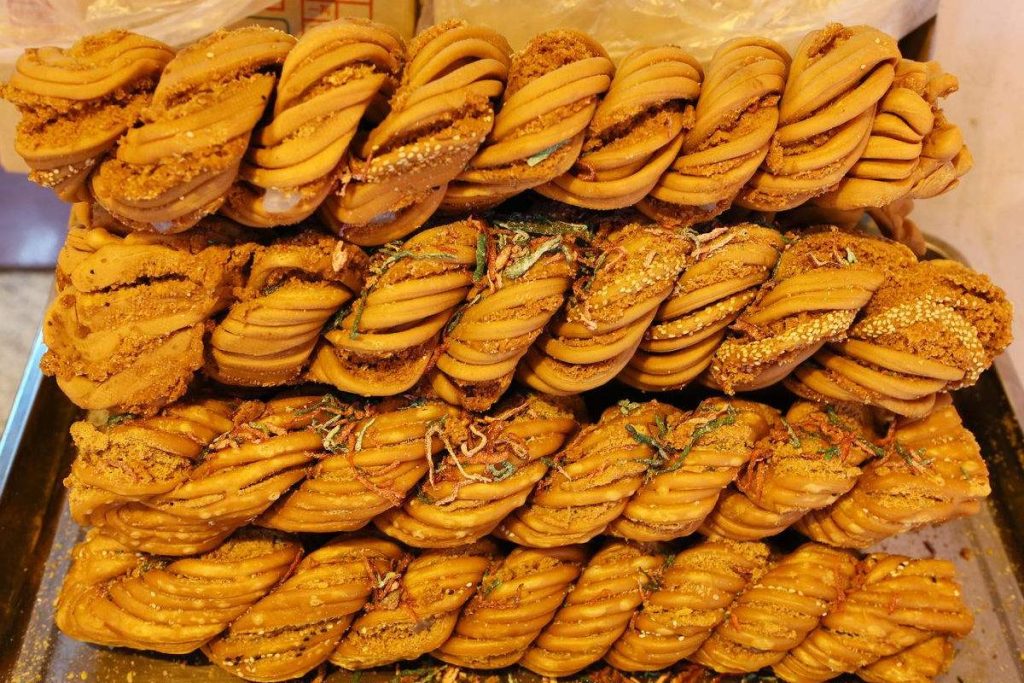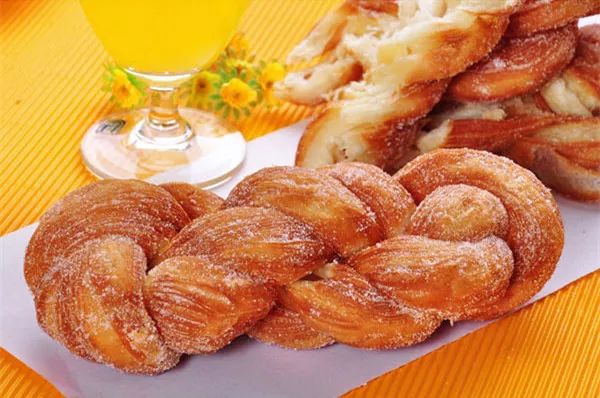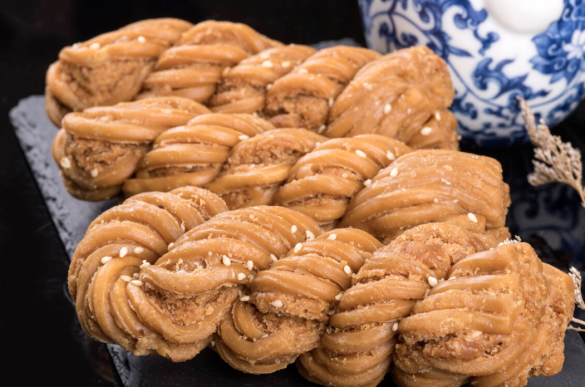“Guifaxiang Shibajie Mahua” is a distinguished symbol of Tianjin’s culinary heritage, known for its unique taste and meticulous craftsmanship. This celebrated brand, established by the skilled artisan Liu Laoba in 1927, has not only survived but thrived through the decades, becoming an iconic representation of traditional Chinese snacks.
The Origins and Development of Guifaxiang Shibajie Mahua
Guifaxiang Shibajie Mahua was born from the creative mind of Liu Laoba over a hundred years ago. Situated on the west side of the Haihe River in Tianjin, Liu Laoba’s small shop began with a humble mission: to make delicious mahua, a type of fried dough twist. Over time, Liu Laoba experimented with different recipes, incorporating ingredients like white sugar and sesame, and perfecting his technique to create mahua that was crispy on the outside yet soft on the inside.
In 1927, the shop was officially named “Guifaxiang.” The mahua quickly gained popularity for its unique stuffing, which included a blend of various ingredients such as osmanthus flowers, walnuts, and shredded fruits and vegetables. This innovation distinguished Guifaxiang mahua from other pastries available in the bustling, multi-national city of Tianjin. By 1956, the brand had already secured its legendary status nationwide following a successful appearance at the Tianjin Specialty Foods Exhibition.

Maintaining Tradition While Embracing Innovation
Guifaxiang has consistently modernized its manufacturing processes while retaining the core artisan techniques that make its mahua special. The company’s mahua is now made through an intricate 20-step process, using high-quality ingredients like fine flour, premium oil, and sugar. This attention to detail ensures that each mahua twist is perfectly crispy, aromatic, and capable of being stored for long periods without losing its crunch.
Recognizing the evolving market demands, Guifaxiang has expanded its product line to include a variety of snacks, ranging from traditional Chinese pastries to Western-style treats. This diversification strategy not only introduces new flavors to customers but also reinforces the brand’s commitment to quality and excellence.
Integrating Cultural Heritage with Modern Branding
In recent years, Guifaxiang has placed a strong emphasis on cultural branding. The establishment of the Shibajie Mahua Cultural Museum is a testament to this effort. The museum, dedicated to the history and cultural significance of mahua, offers visitors an immersive experience, showcasing the rich heritage and innovative future of this traditional snack.
Through various visual and marketing channels, Guifaxiang successfully blends traditional elements with contemporary designs. This strategic visual identity resonates with consumers, offering them a nostalgic yet modern experience.

Expanding Market Presence
Guifaxiang’s market strategy is robust, focusing on both domestic and international sales. In Tianjin alone, the company operates numerous direct-sale stores, with additional outlets across major cities like Beijing and Shanghai. Collaborations with railway and aviation sectors have further solidified its presence, making Guifaxiang mahua a beloved travel snack.
Moreover, Guifaxiang has ventured into e-commerce, tapping into new consumer bases and expanding its market reach. The seamless integration of online and offline sales channels ensures that the brand’s esteemed products are accessible to a global audience.
Innovative Approaches and Future Prospects
The future of Guifaxiang lies in its ongoing commitment to innovation. Through partnerships with academic institutions, the company continues to explore new product lines that adhere to health, taste, and cultural values. Recent developments include varieties of mahua with unique flavors like multi-grain and sugar-free options, catering to health-conscious consumers.
Furthermore, the company aims to leverage its brand’s strong heritage by entering the capital market. The successful listing on the Shenzhen Stock Exchange is a pivotal step, allowing Guifaxiang to expand its manufacturing capacities, explore new business opportunities, and maintain its high standards of food safety and quality.
Conclusion
Guifaxiang Shibajie Mahua exemplifies how a traditional brand can evolve while preserving its cultural essence. By continuously innovating and appealing to both nostalgic and modern sensibilities, Guifaxiang not only sustains its legacy but also propels it forward into new markets and generations. As it continues to grow, Guifaxiang is set to remain a cherished name in the world of traditional Chinese snacks, with a promise of quality and cultural richness for years to come.

